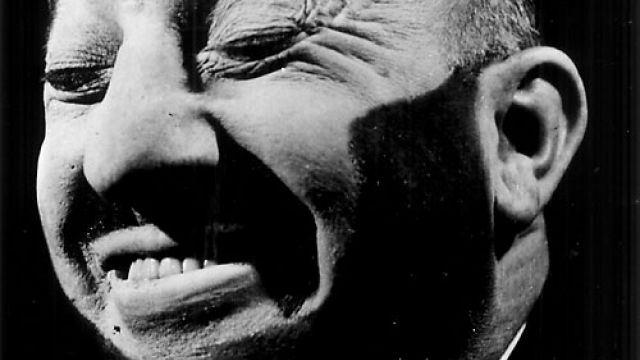Strike me lucky! It’s Mo!
For the best part of half a century, two bold letters – MO – outside an Australian theatre would guarantee a full house.
Those were the days when Roy Rene, popularly known as ‘Mo’, was indisputably Australia’s clown prince. He had a place in the pantheon that included Ned Kelly, Nellie Melba, Les Darcy, Kingsford Smith and Phar Lap. But that was half a century ago.
A cigar maker’s son, Mo was born Henry (‘Harry’) van der Sluys in Adelaide in 1891. He never wanted to be anything but a performer. He progressed from talent quests to professional billing as Little Roy, boy soprano. When his voice changed, so did his name – he became Boy Roy. By 1914 he was working as ‘Roy Rene, Australia’s foremost delineator of Hebrew eccentricities’.
The comic Jewish stereotype that he adopted is difficult to understand and appreciate today. Back then, though, it was a staple in American vaudeville, and Roy took his inspiration from several visiting Jewish performers.
In 1916 Roy and another young comic, Nat Phillips, launched their infamous ‘Stiffy and Mo’ double act. As Stiffy, Phillips was the fast talking feed, the archetypal city ‘lair’. Mo was the ‘top banana’, the lisping, lurking, lewdly leering larrikin, always grabbing the last word and the loudest laugh. Of course they were crude, but theirs was a heady, healthy, light-hearted vulgarity, echoing the slang of the streets and the wit of the working class.
Stiffy and Mo were an immediate success. They packed theatres and even starred in the all-Australian pantomime, The Bunyip. Roy’s catchphrases such as ‘Strike me lucky!’ and ‘You little trimmer’ swiftly became part of the language.
In 1925, when money squabbles split the partnership, Roy conquered the legitimate stage, touring with American comedian Harry Green in the play Give and Take. Nat and Roy re-teamed in 1927, but soon split irrevocably. Rene split, too, from his first wife, soubrette Dorothy Davis. In 1929 he married Sadie Gale, a pretty comedienne and soubrette.
In the early 1930s Roy and Sadie began a long, happy association with the Tivoli variety circuit. Less successful was Roy’s only feature film, Strike Me Lucky, in 1934. The indifferent script gave him little chance to extemporise, and he missed the reaction and warmth of a live audience. Fortunately, the film’s failure did nothing to mar his theatrical popularity.
McCackie Mansion, an anarchic radio sketch series presented before a studio audience, delivered him a vast new public. In one night he could reach more people than could see him on stage in a year. His spluttering antics were compulsory listening in homes right across Australia.
Roy made his last stage appearances in 1950. Though his health was frail, he continued to honour his radio commitments. He died in 1954. There were 1200 people at his funeral, and the lights of theatres all over Australia were dimmed in his honour. He was survived by his wife, Sadie, and his son, Sam, who had joined him in some of his last stage shows.
In 1976 the annual NSW Star Awards were relaunched as the Australian Entertainment ‘Mo’ Awards.
Roy Rene never ventured further than New Zealand: not for want of offers; he just didn’t want to leave the audiences he was comfortable with. An unassuming, unpretentious man, he valued family and friends over fame or wealth. He clowned because he loved it, and to make a comfortable home for his family. He worked instinctively and he worked hard.
One of his obituaries was affectionately headed ‘Strike me lucky – He spluttered his way to stardom.’ He would have liked that.
Frank Van Straten

